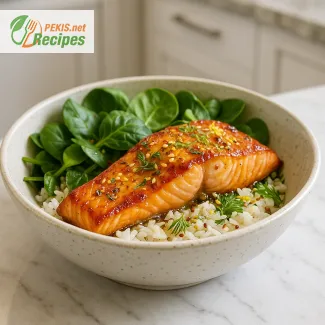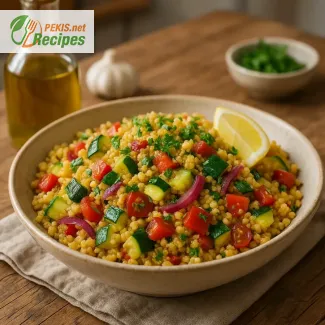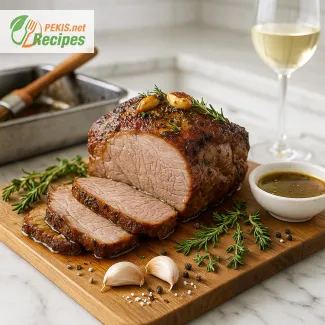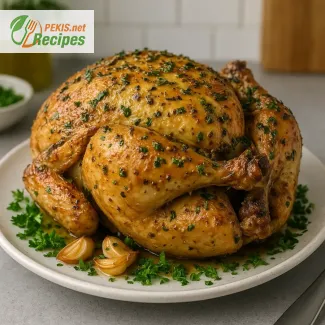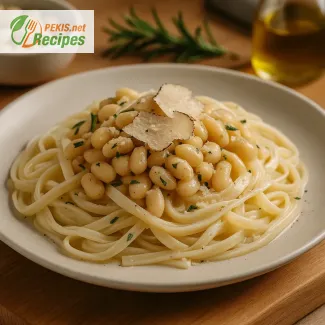
The Essence of Authentic Mediterranean Flavors in Every Bite
Discover the coastal magic of traditional Spanish seafood paella
There are few dishes in the world as evocative, vibrant, and culturally iconic as paella. Originating from the sun-drenched region of Valencia, Spain, seafood paella—known locally as paella de mariscos—is a celebration of coastal Mediterranean cuisine, rich in tradition, flavor, and visual allure. This dish captures the essence of Spanish cooking through its colorful array of ingredients, unique cooking method, and irresistible aromas that transport you straight to a bustling seaside town or a family gathering under the Iberian sun.
What sets seafood paella apart is its harmonious blend of ocean-fresh ingredients, aromatic saffron-infused rice, and the smoky undertones that develop in the pan’s coveted layer of socarrat—the golden crust that forms at the bottom of the rice. More than just a meal, paella represents community, festivity, and the joy of sharing food made with love. Whether enjoyed at a Sunday lunch with friends or served as the star attraction at a special occasion, seafood paella never fails to impress.
A dish rooted in history and regional pride
The story of paella dates back to the mid-19th century, evolving from humble beginnings as a peasant’s dish into a revered Spanish culinary symbol. While the original Valencian version included ingredients like rabbit, snails, and green beans, the seafood variation gained popularity in coastal areas, where the abundant seafood supply naturally inspired a maritime twist. Today, seafood paella is considered a quintessential Spanish delicacy, enjoyed both in local homes and by visitors looking to experience authentic Spanish flavors.
Each component of seafood paella is thoughtfully chosen to showcase the flavors of the Mediterranean Sea. The rice, traditionally a short-grain variety like bomba or calasparra, is the foundation—designed to soak up the rich stock made from shrimp shells, fish bones, and aromatic herbs. Mussels, clams, calamari, and jumbo prawns are layered into the rice, releasing their juices and essence as they steam, forming a fragrant, briny bouquet that defines the dish.
The beauty of balance and simplicity
While seafood paella might appear elaborate, its magic lies in the balance of simple, high-quality ingredients. Spanish cuisine is built upon the principle that less is more, allowing each ingredient to shine in its own right. The careful infusion of saffron threads, gently blooming in warm broth, lends both color and depth, while smoked paprika, garlic, and ripe tomatoes provide a well-rounded base.
Paella is traditionally cooked in a wide, shallow paellera pan over an open flame or grill, which ensures even heat distribution and encourages the formation of the golden socarrat. It’s this rustic cooking technique, combined with a deep respect for the ingredients, that creates a dish layered with both texture and flavor.
More than just a meal—it’s an experience
Eating seafood paella is a multi-sensory experience. The sizzling sound as the rice meets the hot pan, the wafting aroma of saffron and garlic, the glistening seafood nestled in golden rice, and the satisfaction of scraping up the toasted socarrat—each step is part of a ritual that invites anticipation and rewards with delight.
This dish encourages you to slow down and savor. There’s no rush with paella; it’s designed to be shared, to bring people together, and to transform a simple gathering into a memorable feast. Served with a crisp glass of Spanish white wine or a refreshing sangría, seafood paella becomes more than just dinner—it becomes the centerpiece of an unforgettable moment.
A versatile masterpiece suited for any occasion
While the traditional seafood paella is deeply rooted in Spanish culture, its appeal is universal. It offers an ideal combination of comfort food and gourmet dining, making it just as suitable for an intimate weeknight dinner as it is for festive holiday celebrations or outdoor summer gatherings. Its customizable nature also allows for variation—swapping out shellfish for firm white fish or adding seasonal vegetables can tailor the dish to your taste and dietary needs, without sacrificing authenticity.
With just a handful of carefully chosen ingredients and a touch of patience, anyone can recreate this Mediterranean classic in their own kitchen. And once you’ve tasted homemade seafood paella, full of rich umami flavor and kissed by the sea, there’s no turning back.
- Heat olive oil in a wide, shallow paella pan over medium heat.
- Add chopped onions and sauté for 4–5 minutes until translucent.
- Stir in the garlic and red bell pepper, cooking for another 3–4 minutes.
- Add the grated tomatoes and cook until the mixture thickens and deepens in color, about 7–8 minutes.
- Stir in the rice, allowing it to toast lightly for 1–2 minutes.
- Deglaze the pan with white wine, letting it simmer until reduced by half.
- Add fish stock, saffron, smoked paprika, salt, and pepper. Stir well to combine.
- Bring the mixture to a gentle boil, then reduce the heat to low. Do not stir after this point.
- Distribute the squid rings evenly across the pan. Let the paella simmer gently for about 10 minutes.
- Nestle the prawns, mussels, and clams into the rice. Cover loosely with foil or a lid and cook for an additional 15 minutes, or until shellfish have opened and liquid is absorbed.
- In the last 2–3 minutes, increase the heat slightly to develop the socarrat—the golden, crispy rice layer at the bottom.
- Remove from heat and let rest for 5 minutes. Sprinkle with chopped parsley and serve with lemon wedges.
Elevating the Classic: Creative Ways to Reinvent Seafood Paella
From tradition to innovation—unlocking deeper flavors and textures in every bite
Seafood paella is a dish steeped in Spanish heritage, but even the most beloved classics leave room for culinary exploration. While the traditional recipe offers a perfect balance of fresh seafood, aromatic rice, and deep Mediterranean flavors, subtle tweaks can elevate it from comforting to unforgettable. Whether you're aiming to enhance the texture, enrich the flavor, make it healthier, or simply avoid common mistakes, there's always a way to breathe new life into this iconic dish.
Rethinking ingredients to enrich taste and texture
The foundation of paella lies in its rice and broth. By slightly modifying these two components, you can dramatically impact the final result.
Upgrading the rice variety
While bomba and calasparra rice are staples in authentic paella, some chefs experiment with black rice (arroz negro) or red rice to introduce earthy or nutty undertones. Black rice, for instance, brings a subtle sweetness and a deep color that pairs beautifully with shellfish.
Infusing the broth with more depth
Most home cooks rely on a basic fish stock, but creating a homemade seafood fumet by simmering prawn heads, fish bones, garlic, leek, fennel, and tomato paste brings a luxurious, umami-rich base that enhances every bite. Adding a few drops of fish sauce or a spoonful of miso paste can add even more depth without overpowering the Spanish profile.
Using roasted vegetables for richer sofrito
Instead of using raw onions and peppers, try roasting them beforehand. Roasted vegetables add a subtle sweetness and smokiness that layers beautifully with the paprika and saffron. A touch of roasted garlic paste in the base creates an even deeper flavor.
Adding a splash of sherry or brandy
After the rice toasts, a small amount of dry sherry or brandy can be used for deglazing instead of wine. This swap introduces nutty, oak-aged notes that complement the seafood without changing the profile drastically.
The case for home-cooked paella
A homemade paella always surpasses store-bought or restaurant options when prepared with care. The primary reason is control over ingredients. In your own kitchen, you select fresh, high-quality shellfish, organic vegetables, and authentic spices. Many restaurants may use shortcuts like pre-cooked rice or diluted stock, while home cooking allows you to respect the timing, layering, and heat control that paella demands.
Additionally, homemade paella can be adjusted to suit personal dietary needs and taste preferences. You can reduce sodium, avoid certain allergens, or enrich the dish with added nutrition. Most importantly, preparing paella at home transforms it into a shared ritual, a sensory experience that brings people together.
Common mistakes to avoid when making paella
Even seasoned cooks may fall into traps when preparing paella. Here are some frequent errors—and how to avoid them.
Over-stirring the rice
Unlike risotto, paella should never be stirred once the liquid is added. Stirring breaks the grain structure and prevents the formation of the prized socarrat, the crispy rice crust at the bottom.
Overcooking the seafood
Shellfish, particularly prawns and squid, can become rubbery if overcooked. Add them towards the end of cooking, and allow residual heat to finish them off gently.
Using the wrong pan
The paellera, a wide, shallow pan, is essential for even cooking. Using a deep saucepan or skillet prevents proper evaporation and results in soggy rice or uneven textures.
Adding too many ingredients
It’s tempting to overload the dish with seafood and vegetables, but restraint is key. Each addition should enhance, not overwhelm. Too many elements dilute the integrity of the base flavors.
Healthy variations without compromising flavor
Modern diets often call for lighter or allergen-free versions of traditional recipes. Fortunately, paella can be adapted to meet these needs without losing its soul.
Whole grains instead of white rice
For a fiber-rich alternative, try pearled barley, farro, or even brown short-grain rice. These grains hold texture well and absorb flavor, though they may require more cooking liquid and time.
Vegetable-focused seafood alternatives
Replacing half the seafood with hearty vegetables such as artichokes, zucchini, cauliflower florets, or charred eggplant adds complexity, fiber, and vitamins.
Reducing fat and sodium
Swap traditional cured meats or high-sodium stock for low-sodium homemade broth and use less oil, relying on technique and seasoning for flavor instead. Herbs like rosemary, thyme, or lemon zest can boost taste naturally.
Shellfish allergies and substitutions
For those allergic to shellfish, opt for white fish like cod or sea bass, or even tofu marinated in smoked paprika and lemon juice. These offer a similar protein texture and allow everyone to enjoy the dish.
Seasonal upgrades for special occasions
Seafood paella can be transformed into a luxurious holiday meal with a few premium touches:
- Add lobster tail or scallops for elegance and sweetness.
- Use heirloom cherry tomatoes for pops of acidity and color.
- Finish with edible flowers, microgreens, or a drizzle of high-quality Spanish olive oil to elevate presentation.
- Serve with aïoli on the side for a garlicky contrast that enhances the smokiness.
Balancing tradition with innovation
The heart of paella lies in simplicity, patience, and respect for ingredients. Every enhancement, substitution, or adjustment should aim to elevate rather than overshadow the soul of the dish. Whether you’re improving the stock, adjusting the seafood, or infusing it with new textures, the goal remains the same: to serve a paella that tastes like the sea, warms the heart, and brings people to the table.
By combining time-honored techniques with thoughtful innovation, seafood paella becomes not only a dish of the past, but a living, evolving expression of culinary artistry.
Allergens present in this recipe:
- Shellfish (mussels, clams, prawns, squid)
- Sulfites (from wine)
- Potential gluten cross-contamination (if stock or spices are not certified gluten-free)
Suggestions to avoid allergens and gluten:
- For shellfish allergy: Replace seafood with grilled chicken or vegetables (like artichokes, peas, and green beans).
- For sulfite sensitivity: Omit white wine or use sulfite-free wine.
- For gluten-free version: Ensure all packaged ingredients (fish stock, paprika) are certified gluten-free.
Vitamins and minerals per serving (approximate):
- Vitamin A: 1200 IU – supports vision and immune system
- Vitamin C: 45 mg – enhances iron absorption and antioxidant function
- Vitamin B12: 3.2 µg – crucial for red blood cell formation and neurological health
- Iron: 4.8 mg – aids oxygen transport in blood
- Magnesium: 60 mg – essential for muscle and nerve function
- Potassium: 650 mg – helps regulate fluid balance and blood pressure
- Zinc: 2.5 mg – supports immunity and wound healing
Antioxidants per serving (approximate):
- Lycopene: 9 mg – from tomatoes, helps fight oxidative stress and supports heart health
- Flavonoids: Moderate content – from parsley and paprika, beneficial for cardiovascular function
- Selenium: 28 µg – antioxidant protection at the cellular level, supports thyroid health
